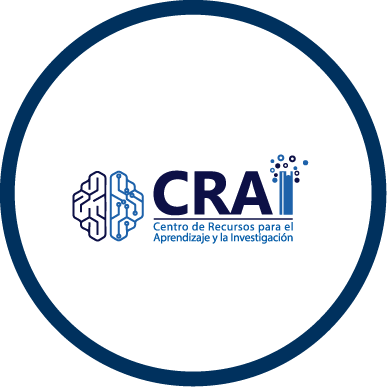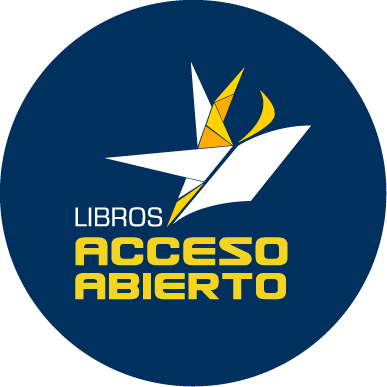Asertividad en funcionarios de la Personería Distrital de Buenaventura, Valle del Cauca, 2024
The objective of this study was to evaluate the assertiveness style in the employees of the Personería Distrital de Buenaventura, Valle del Cauca, 2024. For this purpose, at the methodological level, a non-experimental quantitative-descriptive research was designed based on an empirical epistemologi...
Saved in:
| Main Author: | |
|---|---|
| Other Authors: | |
| Format: | Tesis/Trabajo de grado - Monografía - Pregrado |
| Language: | Español |
| Published: |
Universidad Antonio Nariño
2025
|
| Subjects: | |
| Online Access: | https://repositorio.uan.edu.co/handle/123456789/12531 |
| Tags: |
Add Tag
No Tags, Be the first to tag this record!
|
| _version_ | 1831062936484839424 |
|---|---|
| author | Olave Mina,Anji Madeleine |
| author2 | Macilla Riascos, Yessica |
| author_facet | Macilla Riascos, Yessica Olave Mina,Anji Madeleine |
| author_sort | Olave Mina,Anji Madeleine |
| collection | DSpace |
| description | The objective of this study was to evaluate the assertiveness style in the employees of the Personería Distrital de Buenaventura, Valle del Cauca, 2024. For this purpose, at the methodological level, a non-experimental quantitative-descriptive research was designed based on an empirical epistemological criterion. Thus, the population was determined by the 22 professionals of the staff of the district of Buenaventura. To respond to the objectives, a sociodemographic questionnaire and the Multidimensional Assertiveness Scale was used, which consists of 45 statements and 5 Likert-type response options that allow identifying the assertiveness style: indirect assertiveness, non-assertiveness and assertiveness. In relation to the results, it was possible to identify, according to the three dimensions evaluated, that subjects 11, 15 and 16 have a higher level of indirect assertiveness, while subjects 1, 3 and 10 have higher indexes of direct assertiveness. This clearly shows that these subjects are above the normality indicated by the scale, which is between 40 and 60 of the linear T-scores. The results per question can be seen in the appendices. |
| format | Tesis/Trabajo de grado - Monografía - Pregrado |
| id | repositorio.uan.edu.co-123456789-12531 |
| institution | Repositorio Digital UAN |
| language | Español |
| publishDate | 2025 |
| publisher | Universidad Antonio Nariño |
| record_format | dspace |
| spelling | repositorio.uan.edu.co-123456789-125312025-02-27T20:35:01Z Asertividad en funcionarios de la Personería Distrital de Buenaventura, Valle del Cauca, 2024 Olave Mina,Anji Madeleine Macilla Riascos, Yessica Asertividad, comunicación, habilidades sociales, gestión pública. assertiveness, communication, social skills, public management. The objective of this study was to evaluate the assertiveness style in the employees of the Personería Distrital de Buenaventura, Valle del Cauca, 2024. For this purpose, at the methodological level, a non-experimental quantitative-descriptive research was designed based on an empirical epistemological criterion. Thus, the population was determined by the 22 professionals of the staff of the district of Buenaventura. To respond to the objectives, a sociodemographic questionnaire and the Multidimensional Assertiveness Scale was used, which consists of 45 statements and 5 Likert-type response options that allow identifying the assertiveness style: indirect assertiveness, non-assertiveness and assertiveness. In relation to the results, it was possible to identify, according to the three dimensions evaluated, that subjects 11, 15 and 16 have a higher level of indirect assertiveness, while subjects 1, 3 and 10 have higher indexes of direct assertiveness. This clearly shows that these subjects are above the normality indicated by the scale, which is between 40 and 60 of the linear T-scores. The results per question can be seen in the appendices. El presente estudio tuvo como objetivo evaluar el estilo de asertividad en los funcionarios de la Personería Distrital de Buenaventura, Valle del Cauca, 2024. Para ello, a nivel metodológico se diseñó una investigación de tipo cuantitativo – descriptivo no experimental fundamentado en un criterio epistemológico de base empírica, la población estuvo determinada por los 22 profesionales de planta de la Personería distrital de Buenaventura. Para responder a los objetivos, se utilizó un cuestionario sociodemográfico y la Escala Multidimensional de Asertividad, que consta de 45 afirmaciones y 5 opciones de respuesta tipo Likert que permiten identificar el estilo de asertividad: asertividad indirecta, no asertividad y asertividad. En relación a los resultados, se pudo identificar las tres dimensiones evaluadas, que los sujetos 11, 15 y 16 tienen un mayor nivel de asertividad indirecta, mientras que los sujetos 1, 3 y 10 marcan mayores índices de asertividad directa. Lo anterior, claramente permite comprender que estos sujetos están por encima de la Asertividad en la Personería Distrital 11 normalidad que indica la escala, que se sitúa entre 40 y 60 de las puntuaciones T lineales. Los resultados por pregunta se podrán evidenciar en los apéndices. Psicólogo(a) Pregrado Distancia Investigación 2025-02-27T20:33:13Z 2025-02-27T20:33:13Z 2024-11-15 Tesis/Trabajo de grado - Monografía - Pregrado info:eu-repo/semantics/acceptedVersion http://purl.org/coar/version/c_ab4af688f83e57aa https://repositorio.uan.edu.co/handle/123456789/12531 Español info:eu-repo/semantics/openAccess http://purl.org/coar/access_right/c_abf2 PDF text/plain; charset=utf-8 application/pdf text/plain; charset=utf-8 Universidad Antonio Nariño Psicología (Distancia) Facultad de Psicología Buenaventura Buenaventura Alonso-Spannowsky, E., & Montes, R. (2010). Construcción de una escala multidimensional de asertividad basada en las distintas teorías (unimodal, bidimensional y tridimensional). Anuario de psicología, 41(3), 399-418. Álvarez-Gallego, A., & Medina, J. (2007). La asertividad: uso, orígenes y futuros. Revista Internacional de Psicología y Terapia Psicológica, 3(7), 427-438. Álvarez-García, D., González-Castro, P., Núñez, J., Rodríguez, C., & Álvarez, L. (2016). Scale of Multidimensional Assertiveness: Development, Factor Structure, and Validation. Frontiers in Psychology, 7, 1-11. Arias, V. M. R., Montoya, D. V. N., & Otero, C. E. R. Asertividad en funcionarios de la administración. Revista Encuentros. Universidad Autónoma del Caribe Colombia, 13-24. Aydın, G. (2017). The Effectiveness of an Assertiveness Training Program Applied to University Students. Journal of Education and Training Studies, 5(7), 141-152. Bandura, A. (1977). Self-efficacy: toward a unifying theory of behavioral change. Psychological Review, 84(2), 191–215. Berengüi, R., & Rodríguez-Marín, J. (2006). Validation of a short scale of assertiveness in a Spanish population. The Spanish Journal of Psychology, 9(1), 71-79. |
| spellingShingle | Asertividad, comunicación, habilidades sociales, gestión pública. assertiveness, communication, social skills, public management. Olave Mina,Anji Madeleine Asertividad en funcionarios de la Personería Distrital de Buenaventura, Valle del Cauca, 2024 |
| title | Asertividad en funcionarios de la Personería Distrital de Buenaventura, Valle del Cauca, 2024 |
| title_full | Asertividad en funcionarios de la Personería Distrital de Buenaventura, Valle del Cauca, 2024 |
| title_fullStr | Asertividad en funcionarios de la Personería Distrital de Buenaventura, Valle del Cauca, 2024 |
| title_full_unstemmed | Asertividad en funcionarios de la Personería Distrital de Buenaventura, Valle del Cauca, 2024 |
| title_short | Asertividad en funcionarios de la Personería Distrital de Buenaventura, Valle del Cauca, 2024 |
| title_sort | asertividad en funcionarios de la personeria distrital de buenaventura valle del cauca 2024 |
| topic | Asertividad, comunicación, habilidades sociales, gestión pública. assertiveness, communication, social skills, public management. |
| url | https://repositorio.uan.edu.co/handle/123456789/12531 |
| work_keys_str_mv | AT olaveminaanjimadeleine asertividadenfuncionariosdelapersoneriadistritaldebuenaventuravalledelcauca2024 |




